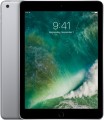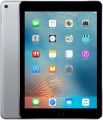Brightness
The maximum brightness in nits provided by the tablet screen.
The brighter the display, the more readable the picture remains on it under intense ambient light. Also, high brightness is important for the correct display of HDR content. However, a large margin for this indicator affects the cost and power consumption of the screen. Manufacturers can specify standard, maximum, and peak brightness values. At the same time, an equal sign cannot be put between the maximum and peak brightness. The first indicates the ability of the screen to produce the specified brightness over its entire area, while the peak one - in a limited area and for a short time (mainly for HDR content).
CPU
The model name of the processor installed in the tablet.
The processor is the “heart” of the device. It is he who is responsible for performing all the computing operations necessary for the normal operation of the tablet, and largely determines the overall performance. Knowing the name of a specific processor model, you can easily find detailed information on it, incl. and comparison with other models.
The most popular chips these days are from
Qualcomm(in particular, the top solutions
Snapdragon 800 series and
Snapdragon 8 series),
MediaTek(budget and “mid-range”
MediaTek Helio processors and the line of advanced
MediaTek Dimensity chipsets with 5G support), and among Windows tablets
Intel processors (mainly the
Intel Core family) are often found. Quite a rarity are branded
Kirin processors from Huawei and Honor.
CPU speed
The clock speed of the processor installed in the tablet is actually the maximum number of operations performed by one processor core per second. This indicator is important for the speed of the system, but a high clock frequency in itself does not guarantee speed. The actual speed of the processor also depends on its architecture, the number of cores and many other features, and the overall speed of the device also depends on the amount of “RAM”, the installed OS, etc. Therefore, situations are not uncommon when
powerful advanced tablets have a lower CPU frequency than more modest models.
CPU cores
The number of individual cores provided by the tablet processor.
The core is the part of the processor that executes a single instruction stream. Accordingly, the more cores, the more threads the processor can simultaneously process and the higher its performance (ceteris paribus). On the other hand, numerous cores is not always an indicator of a high class processor and tablet as a whole. First, the actual performance of the chip depends on many other factors, and advanced dual-core processors often outperform inexpensive quad-core processors. Secondly, the development and cheapening of technologies has led to the fact that simple
quad-core CPUs have become quite affordable even for low-cost devices. And even
eight-core processors, which at one time were an unequivocal sign of advanced models, are increasingly found in relatively inexpensive tablets; the same can be said about relatively recent
processors with 10 cores. However it is worth noting that in such chips, the cores can be divided into main (with high performance) and additional (used in tasks that do not require power). For example, 8 cores can be divided into 4 main and 4 additional cores. However, such a division is often not a disadvantage, but an advantage: numerous full-fledged cores is rarely required in fact, and reduced power saves energy and improves battery life.
Graphics card
Model of the graphics card installed in the tablet. The graphics card in such devices is not a separate device, but part of the processor; however, she still has a clear specialization and is responsible for graphics.
Accordingly, the graphics capabilities of the tablet directly depend on the characteristics of the video accelerator. Theoretically, knowing the name, you can find detailed specifications of a graphics card, reviews, test results and other information and evaluate how it suits you. At the same time, in most cases there is no need to delve into such details — all system components, including the graphics card, are usually selected in such a way as to correspond to the general class of the tablet and the capabilities necessary for this class.
RAM
The amount of random access memory (RAM) installed in the tablet. This memory is used for direct data processing, and therefore its volume is one of the main indicators of system speed and power. However note that the optimal amount of RAM strongly depends on the OS used — different systems and even different versions of the same "OS" can vary greatly in terms of consumed resources. But models on the same OS can be compared with each other in terms of the amount of RAM.
As for specific values, indicators in
1 GB or less in our time are definitely a sign of a weak tablet.
2 GB and
3 GB can be called the entry level,
4 GB and
6 GB are middle class, and in the most advanced models,
8 GB, or even
16 GB can be installed (or even more) RAM.
AnTuTu Benchmark
The result shown by a device when undergoing a performance test (benchmark) in the AnTuTu Benchmark.
AnTuTu Benchmark is a comprehensive test designed specifically for mobile devices, primarily smartphones and tablets. It evaluates the performance of the processor, memory, graphics, and input/output systems, providing a clear impression of the system's capabilities. The better the performance, the higher the score. According to AnTuTu, top models are those that score more than 500,000 points.
As with any benchmark, this test does not provide absolute precision; for more details on measurement inaccuracies, see the "3DMark Gamer's Benchmark" section.
Geekbench
The result shown by the device when passing the performance test (benchmark) Geekbench.
Geekbench is a specialized benchmark designed for CPUs. Since version 4.0, the test has also been applied to graphics accelerators; towards the end of 2019, the benchmark was released under the number "5". The characteristics of portable gadgets usually provide data specifically for the CPU. During testing, Geekbench simulates the workloads that occur when performing real-world tasks, and takes into account both the capabilities of a single core and the efficiency of multiple cores running simultaneously. Thanks to this, the final results characterize well the capabilities of the processor in everyday use. In addition, the test is cross-platform and allows you to compare the CPUs of different devices (smartphones, tablets, laptops, PCs). The help information only lists the multi-core test values for CPU.
Main
— The number of lenses. The characteristics of the main (rear) camera of the tablet are represented primarily by the number of modules, which in most cases are 1, but there are also
tablets with a dual camera.
— Resolution. The second important factor of the camera is the number of megapixels. Many really believe that the more MP, the better the quality of filming. However, this is not entirely true: only the maximum resolution of the resulting images depends on the resolution of the matrix, and their quality is determined by many other parameters. However a large sensor resolution may be a sign of an advanced camera, but this is not necessary — two "eyes" with the same number of megapixels can radically differ in the quality of shooting.
Rear cameras in tablets may well be used for photo and video shooting; therefore, they have
cameras of 8 MP,
10 MP and even higher (
12 and
13 MP).
— Autofocus. For focus in such cameras, a movable lens system controlled by automation is responsible. It takes some time for the automation to work, and the lenses themselves turn out to be more complicated and more expensive than optics with a fixed focus (fixed lenses that are initially set to a large range of distances). However, the quality of the pictures is disproportionate
...ly higher than that of cameras without autofocus, and the systems themselves are constantly being improved, and their response time is increasingly approaching instantaneous.
— Flash. Flash significantly expands the capabilities of the camera. First of all, it allows you to shoot in low light conditions; in this case, the backlight, usually, can also be used in the constant glow mode — for video shooting. The second situation where a flash can come in handy is backlighting when the subject is in shadow. In addition, in many tablets, the flash LED can also be used as a regular flashlight, without a camera.
